Fabulous facts about sea turtles
10 April 2023
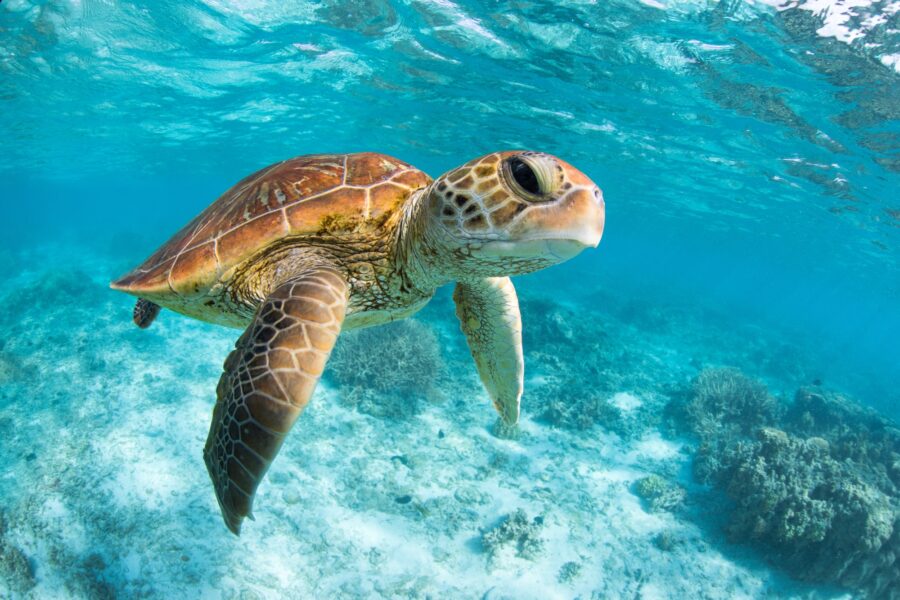
A green sea turtle (Chelonia mydas).
Image credit: shutterstock
Sea turtles have graced our oceans and beaches for millions of years, but how much do you actually know about these treasured creatures?
Australians love sea turtles. Whether it’s swimming alongside them on coral reefs, spotting one coming ashore, or watching hatchlings erupt from the sand, these reptiles are firm favourites.
While our encounters are mostly close to land, the world’s seven different species of sea turtle actually live the majority of their lives out at sea.
Here’s some more sea turtle facts you may not know:
- Unlike most land turtles, sea turtles cannot retract their heads into their shell for safety. They have exchanged this feature for powerful fore (front) flipper muscles that propel them at great speed through the water. Their muscles take up so much room inside their shell that there is no room for their head.
- Their strong, paddle-shaped fore flippers power them through the water while the smaller rear flippers are used for steering and digging nest chambers.
- The back (or top) of a sea turtle shell is called the carapace. The bottom is called the plastron.
- The carapace is light, streamlined and buoyant, giving a sea turtle the ability to slip through the water with minimum effort. It is also strong and provides protection.
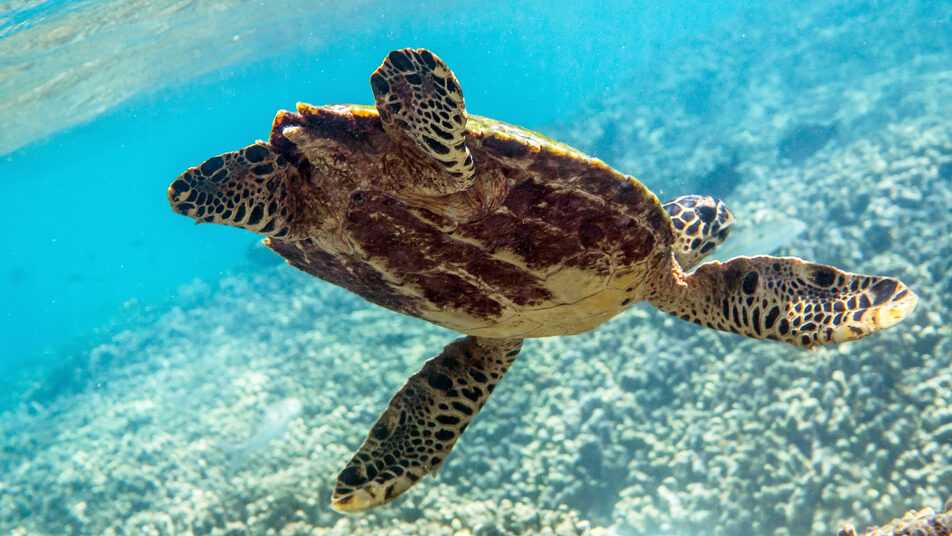
- Sea turtles have no teeth. Their mouths have evolved to either shear food, such as sponges and seagrass in the case of hawksbill and green turtles, or to crush food, such as crustaceans and gastropods in the case of loggerheads (Caretta caretta) and olive ridley (Lepidochelys olivacea) turtles.
- Although much is known of their activities when they come ashore to nest, little is known of their ocean antics.
- The young of most sea turtle species drift and feed in the open ocean until they reach 5–10 years of age and about 30 centimetres in length. They then settle at inshore feeding grounds.
- The ‘tears’ often seen around a sea turtle’s eyes when it’s on land come from special glands located near the tear ducts that excrete excess salt ingested while feeding underwater.
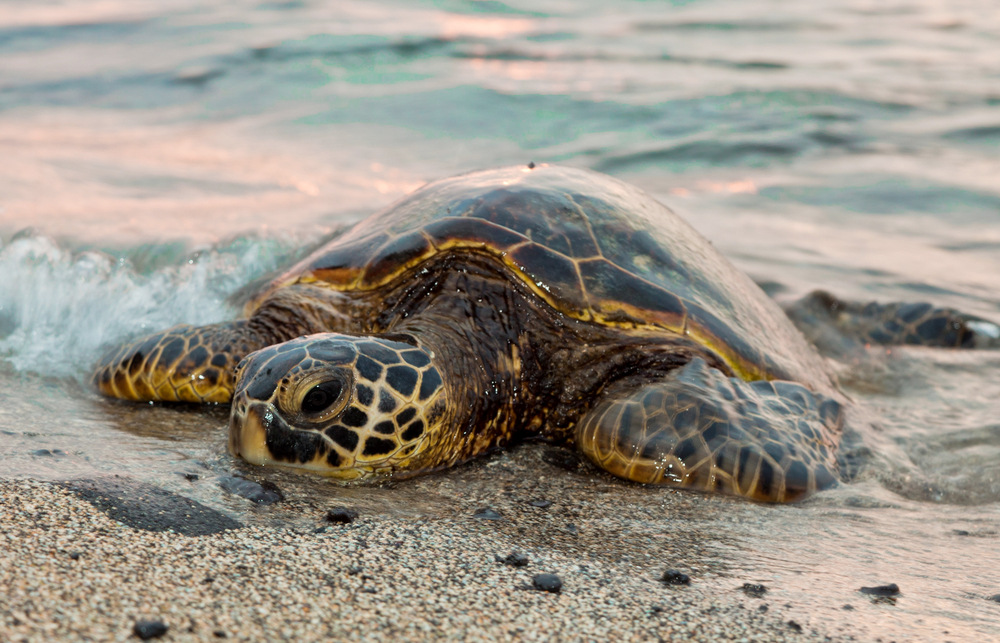
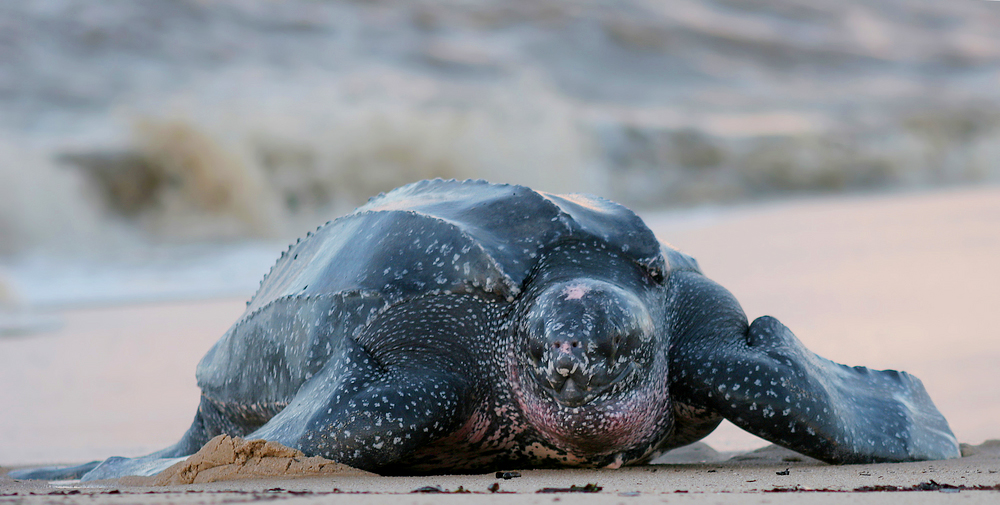
- The carapace is made of flattened bones covered in horny plates called scutes, with the exception of leatherback turtles (Dermochelys coriacea) that have a shell made from many small bones embedded in a leathery skin.
- Sea turtles grow slowly and – depending on species – take between 11–40 years to reach sexual maturity.
- They can live for years in one place, often returning to the same location to sleep.
- They make long migrations, which can be hundreds and even thousands of kilometres, from feeding grounds to nesting beaches. Males mate with females along the route and close to nesting beaches.
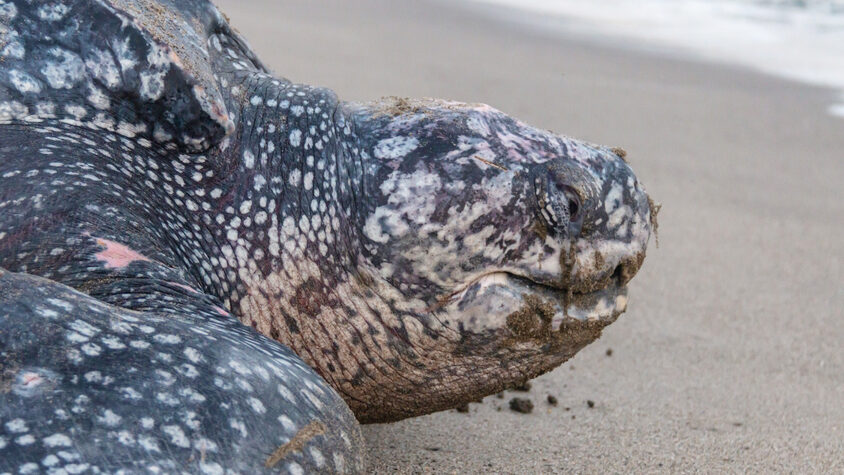
- Females return to nest on the same beach, or beaches nearby, on which they hatched. How they achieve this remarkable feat of navigation is poorly understood, however, it’s thought they use a combination of clues such as ‘reading’ the Earth’s magnetic field and ocean currents and even judging the angle of the sun.
- Most female sea turtles breed only every 2–3 years, as an annual breeding pattern would be too exhausting due to long migrations and the energy required to produce and lay many hundreds of eggs.
- Hatchling gender is dependent on sand temperature. Cooler sands produce more males, warmer sands produce more females.
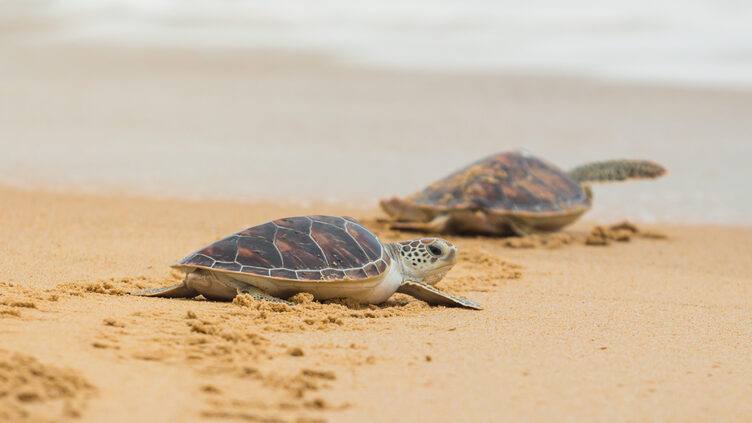
The information in this article was provided by the Sea Turtle Foundation (STF).

